Step into a world of adorabaly educational creativity with our hamster coloring pages. These charming designs bring these beloved rodents to life, offering a therapeutic and artistic escape for all ages. Whether you’re a child or an adult seeking a relaxing pastime, or need a lesson plan to teach kids; these pages promise to add a burst of color to your day. Grab your favorite coloring tools and let your imagination run wild in the playfully fun world of hamsters!
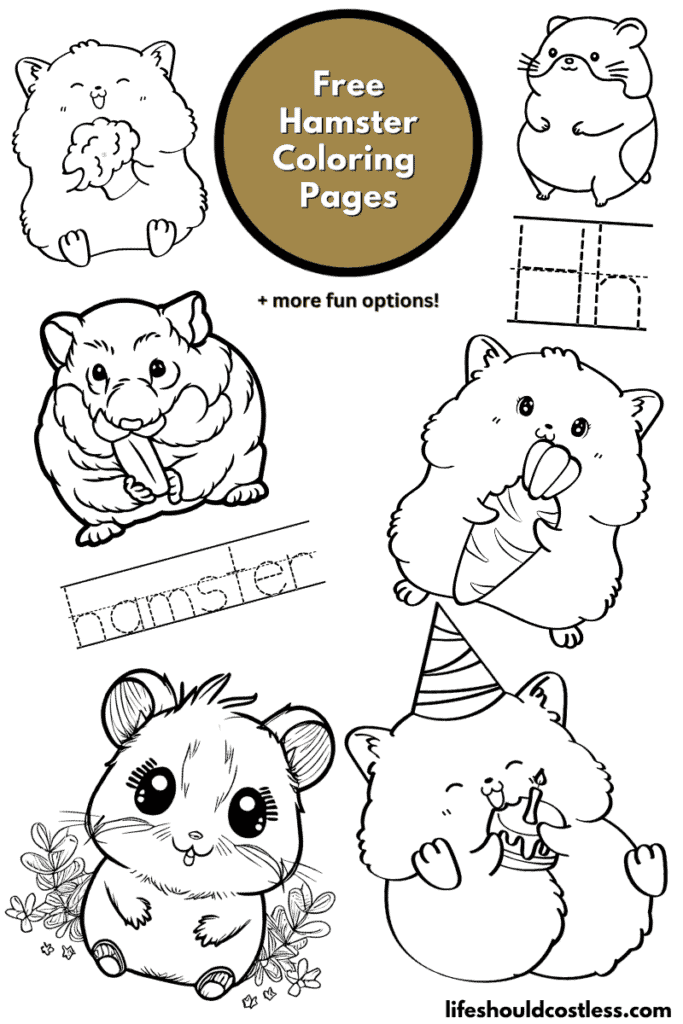
You are welcome to pick any design that captures your interest.
Just select the template you prefer, access the free PDF, print it out, and let your coloring imagination run free.
These templates can also double as embroidery guides or serve as a wellspring of ideas for finely detailed tattoos.
Your creative options are boundless, limited only by the expanse of your own imagination.
Hamster facts
If you’re new to my coloring pages, it’s worth noting that I take pleasure in offering you the chance to dive into the topic.
This allows you to effortlessly turn your coloring adventure into an educational exploration. Having said that, let’s get started!
Here are lots of fun and interesting, simplified, facts about hamsters:
- Natural Habitat Diversity: Hamsters are not just one species but a diverse group. They originate from various parts of Europe, Asia, and the Middle East. Each species has adapted to different climates and environments, from arid deserts to grassy fields.
- Nocturnal Lifestyle: Hamsters are primarily nocturnal animals, which means they are most active during the night. This behavior is thought to help them avoid predators in the wild.
- Cheek Pouches: One of the most distinctive features of hamsters is their expandable cheek pouches. These pouches allow them to carry food back to their burrows for storage. Hamsters can carry food in their cheeks that’s as big as their own heads!
- Tiny Size: Most hamsters are quite small, with the Syrian hamster being one of the largest species at around 6 to 7 inches (15-18 cm) in length.
- Solitary Creatures: Hamsters are generally solitary animals and prefer to live alone. In the wild, they only come together for mating purposes and tend to be territorial.
- Short Lifespan: Hamsters have a relatively short lifespan, typically living for 2 to 3 years. However, this can vary depending on their species and care.
- Rapid Reproduction: Hamsters are known for their fast reproductive rate. A female hamster can become pregnant just a few weeks after birth and can have several litters in a year.
- Grooming Habits: Hamsters are meticulous groomers and spend a significant amount of time cleaning themselves. They have a specialized grooming claw on their front paws to help with this.
- Breed Diversity: There are several hamster breeds, including Syrian hamsters, dwarf hamsters (like Roborovski, Campbell’s, and Winter White), and Chinese hamsters. Each has its own unique characteristics and care requirements.
- Hibernation Mimicry: Some hamster species, like the European hamster, are known to go into a state of torpor during the winter months. They lower their metabolism and enter a hibernation-like state to conserve energy.
- Sensitive Hearing: Hamsters have excellent hearing and can hear sounds at frequencies that are beyond the range of human hearing. This acute sense of hearing helps them detect predators and communicate with other hamsters through vocalizations.
- Color Variations: Syrian hamsters, in particular, exhibit a wide range of coat colors and patterns, making them popular as pets. Breeders have developed various color mutations, resulting in an array of eye-catching appearances.
- Tunnelling Experts: Hamsters are skilled burrowers and create intricate underground tunnels in the wild. These burrows provide them with shelter, protection, and storage for food.
- Chewers: Hamsters have constantly growing teeth, so they need to chew on things to keep their teeth from getting too long. Providing them with safe chew toys is essential for their dental health.
- Short Gestation: Hamster pregnancies are relatively short, lasting only about 16 to 22 days depending on the species. This short gestation period helps them adapt quickly to changing environmental conditions.
- Variety in Diet: In the wild, hamsters are omnivores, consuming a mixture of grains, seeds, insects, and vegetation. As pets, they require a balanced diet that may include commercial hamster food supplemented with fresh fruits and vegetables.
- Excellent Climbers: Some hamster species, like the dwarf hamsters, are adept climbers and can scale the walls of their cages or exercise wheels.
- Territorial Markers: Hamsters mark their territory with scent glands located on their flanks. They rub these glands on surfaces to leave their scent, indicating their presence and dominance.
- Escape Artists: Hamsters are known for their escapism skills. They can squeeze through surprisingly small openings and are excellent at finding weak points in cages or enclosures.
- Beloved as Pets: Hamsters make popular and beloved pets due to their small size, charming personalities, and relatively low maintenance care requirements.
Whether you’re a hamster enthusiast or simply curious about these captivating rodents, these facts showcase the diverse and intriguing world of hamsters.
We learned lots about hamsters, but there’s much more to know.
If you would like to read more about them, here are some other reputable resources to check out.:
- https://en.wikipedia.org/wiki/Hamster
- https://www.petco.com/content/petco/PetcoStore/en_US/pet-services/resource-center/new-pet/25-fun-facts-about-hamsters.html
- https://a-z-animals.com/blog/hamsters-pet-care-lifespan-costs-and-important-facts/
- https://kids.britannica.com/kids/article/hamster/400292
- https://kids.nationalgeographic.com/nature/article/wild-hamsters
- To see all of my free printables, go here.
- If you would like to see an alphabetized index of free printable coloring pages, go here!
- All of my animals coloring pages are found here.
- Or, my other mammals coloring pages can be found here.
Coloring tips
Coloring a picture of a hamster can be a delightful and creative activity.
Here are some of my best tips and tricks to help you make your hamster-themed artwork look truly fantastic:
- Choose the Right Materials: Use high-quality coloring materials, such as colored pencils, markers, or crayons, to achieve vibrant and smooth colors. Consider colored pencils for intricate details and shading, markers for bold colors, and crayons for a soft and blended look.
- Reference Images: Look at real hamster photos or illustrations as a reference to get a better understanding of their fur colors and patterns.
- Layering and Blending: Start with a light layer of color and gradually build up layers for shading and depth. Blending colors can create a more realistic fur texture.
- Fur Texture: Mimic the appearance of hamster fur by using short, controlled strokes in the direction of their fur growth. For longer fur, use longer strokes. Experiment with different pencil pressures to create varying degrees of darkness for a textured look.
- Natural Colors: Hamsters come in various colors, including brown, gray, white, and even black. Research the specific type of hamster you’re coloring to get their natural colors right.
- Highlighting and Shadows: Add highlights with a lighter color to areas where light hits the fur, such as the tops of their heads and backs. Conversely, use darker colors for shadows in recessed areas.
- Background: Consider adding a simple background to your coloring page to provide context and make your hamster stand out. It can be a grassy field, a cozy hamster habitat, or any scene you like.
- Detail Work: Pay attention to small details, such as the eyes, nose, and ears. Adding fine details can bring your hamster’s face to life.
- Experiment with Textures: Don’t be afraid to experiment with different textures, such as adding a fuzzy texture to the fur or a glossy effect to the eyes.
- Stay Patient: Coloring can be a relaxing and time-consuming activity. Take your time and enjoy the process, especially when working on intricate details.
- Use References: If you have a pet hamster or access to one, observe their coloring and behavior in real life. This can help you capture realistic details in your coloring.
- Practice and Experiment: The more you practice coloring hamsters, the better you’ll become. Experiment with different techniques and colors to find what works best for you.
- Online Tutorials: There are many online tutorials and videos that offer step-by-step guidance on coloring techniques, including those specific to animals like hamsters. YouTube is a great place to look for video tutorials.
- Share and Learn: Don’t hesitate to share your colored hamster pictures with others and seek feedback. You can also learn from other artists and their approaches to coloring.
Remember that coloring is a creative and enjoyable activity, so don’t worry too much about being perfect.
Let your imagination guide you, and have fun bringing your hamster pages to life!
Options For Printing:
Letter H is for hamster writing practice worksheets
*My letter H is for hamster coloring sheet printables have been exclusively crafted for classroom usage, making them the sole printables available on this page that require no formal written consent for public use.
However, should anyone ask where you got them, kindly share the link to this post as a reference. Your support is greatly appreciated!

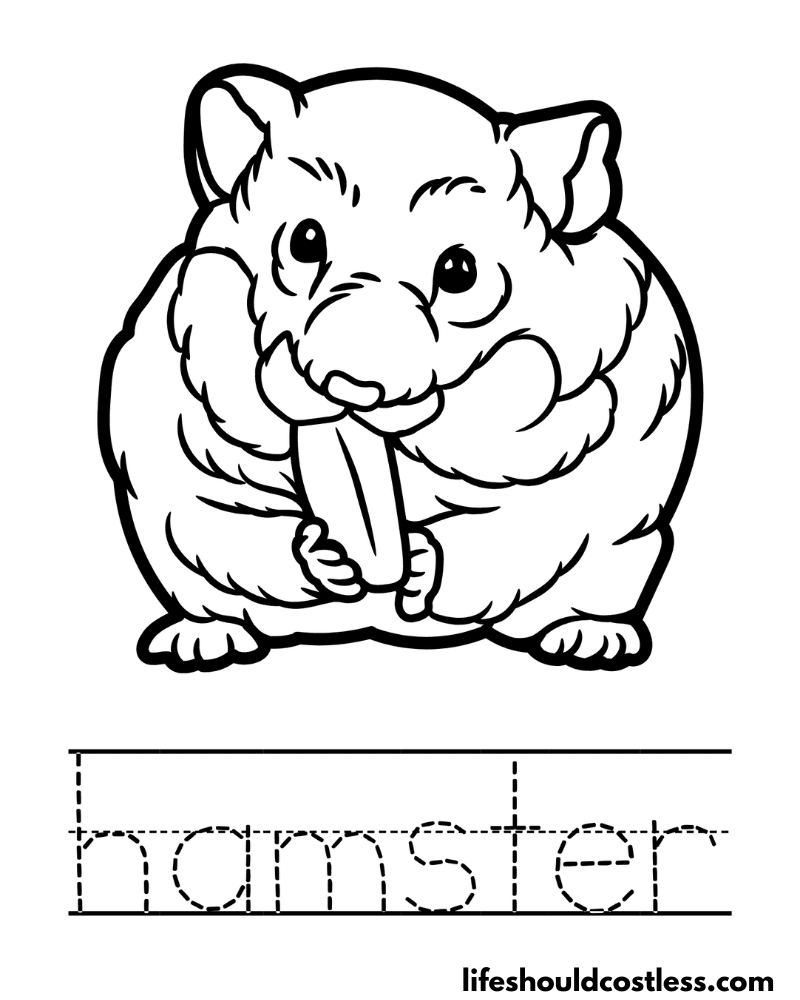
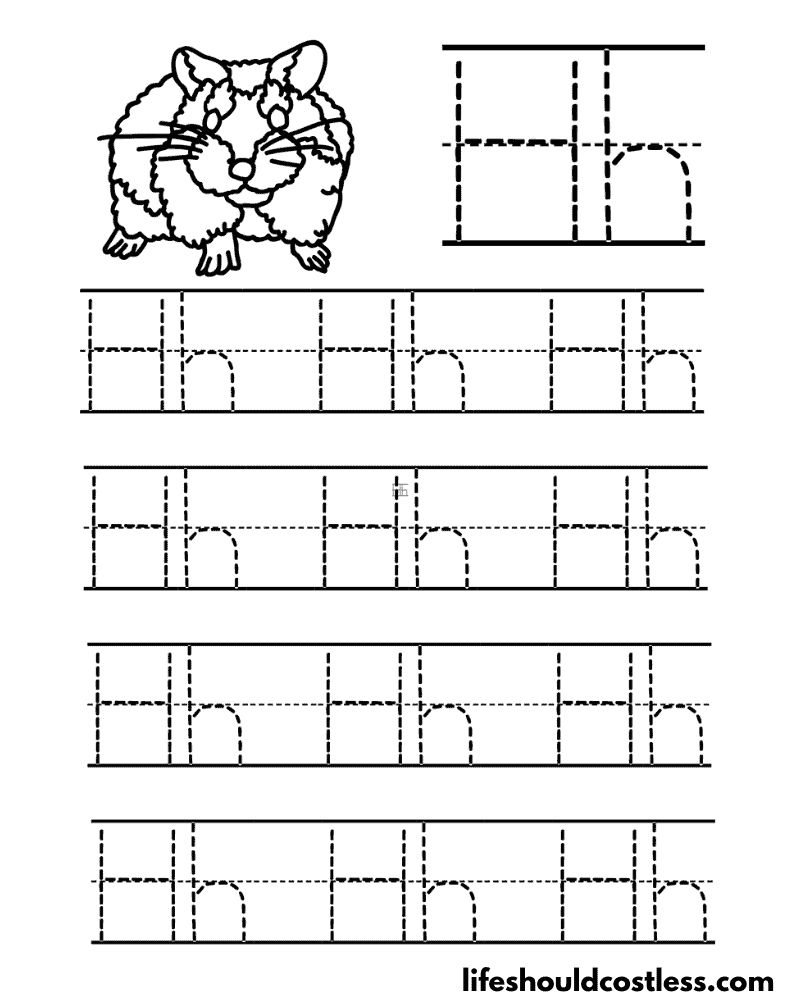
Various hamster designs
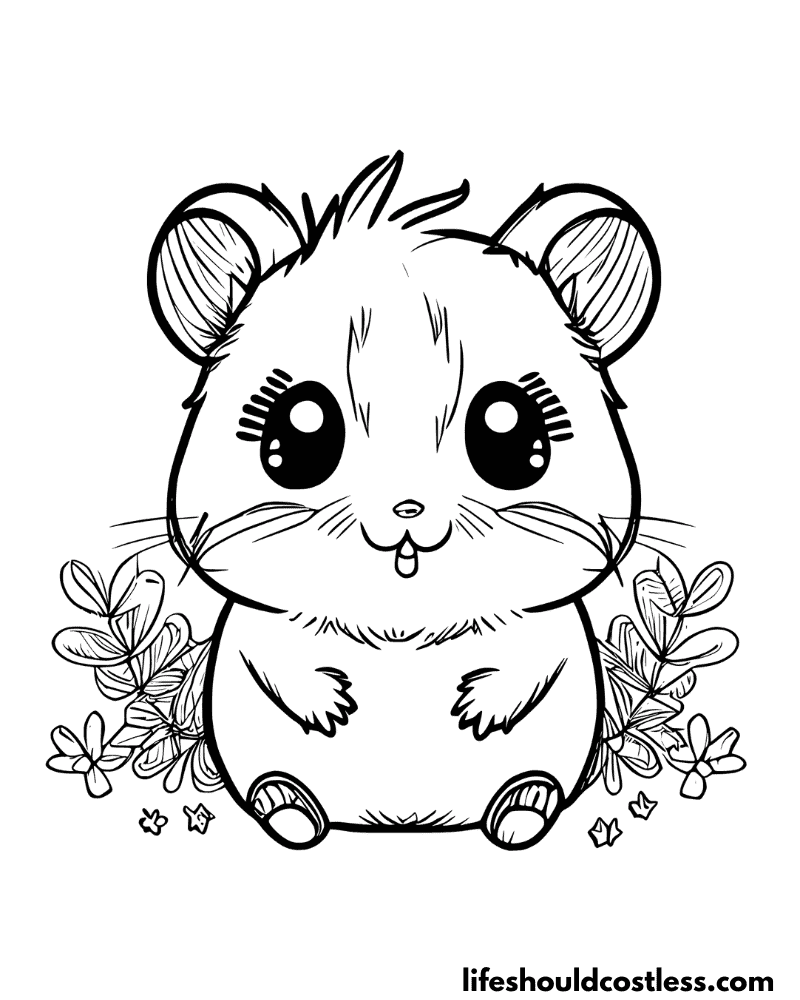


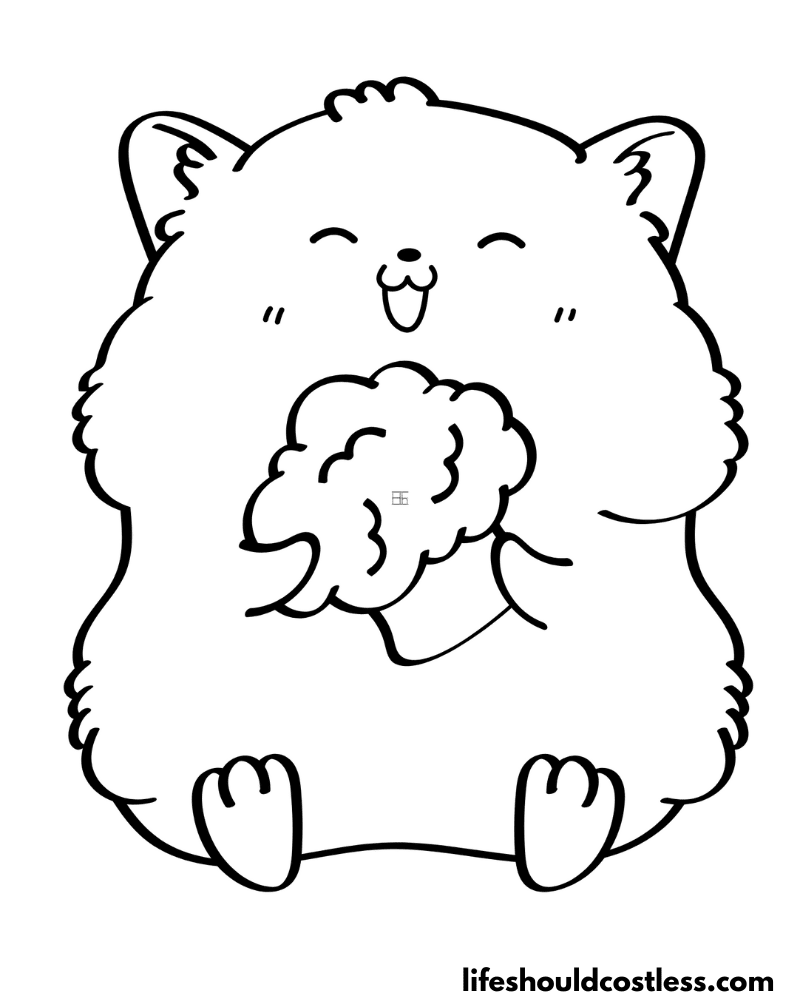
FAQ’s
Hamsters can come in a range of basic colors, including:
Golden or Brown: This is one of the most common colors for many hamsters. Their fur takes on a golden-brown hue.
Gray: Gray hamsters are also common, and they can vary in shades from light to dark gray.
White: Some hamsters have completely white fur, and they may have dark eyes (not albino) or red eyes (albino).
Black: Black hamsters have dark black fur.
Cream: Cream-colored hamsters have a light, pale cream or beige fur.
Cinnamon: Cinnamon hamsters have a warm reddish-brown or cinnamon-colored fur.
Sable: Sable hamsters have a dark brown or almost black fur.
Agouti: Agouti hamsters have a wild-type coloration with a mix of brown, gray, and black hairs.
Fawn: Fawn hamsters have a pale, tan-colored fur.
These are some of the basic colors that hamsters can exhibit.
Keep in mind that there can be variations and combinations of these colors, and hamsters can also have different patterns, which can further add to their unique appearances.
*I will add more hamster colour / color questions and answers as the questions get sent to me.
Conclusion
In conclusion, exploring the world of hamster coloring pages has not only been a colorful journey but also a delightful escape into the charming universe of these endearing rodents.
Through the strokes of our imagination and the careful selection of hues, we’ve brought these tiny creatures to life, each page a canvas for creativity and self-expression.
Whether you’re a young artist discovering the joys of coloring or an adult seeking a therapeutic retreat, these pages have offered a gateway to a world where imagination knows no bounds.
But beyond the act of coloring itself, these pages have allowed us to connect with nature and appreciate the intricate details of these small wonders.
We’ve observed the diverse colors and patterns that hamsters can exhibit in the wild and as beloved pets, gaining a deeper understanding of their uniqueness.
As we conclude our artistic odyssey with these hamster coloring sheets, let us remember that creativity has no age limit, and the beauty of these pages lies not just in the colors we’ve chosen but in the moments of mindfulness and relaxation they’ve provided.
So, as we put down our coloring tools and admire our completed works, let’s carry with us the reminder that creativity is a gift that continues to enrich our lives, one stroke at a time.
Thanks so much for stopping by my blog and supporting my endeavors to make people’s lives a little easier/better/more affordable.
If you liked this post, or found it helpful in any way, please make sure to share it with your family, friends, and co-workers via social media.
Or you could even send them the direct link via email. Whichever way you choose to spread the love, I super appreciate it! ~Sarah
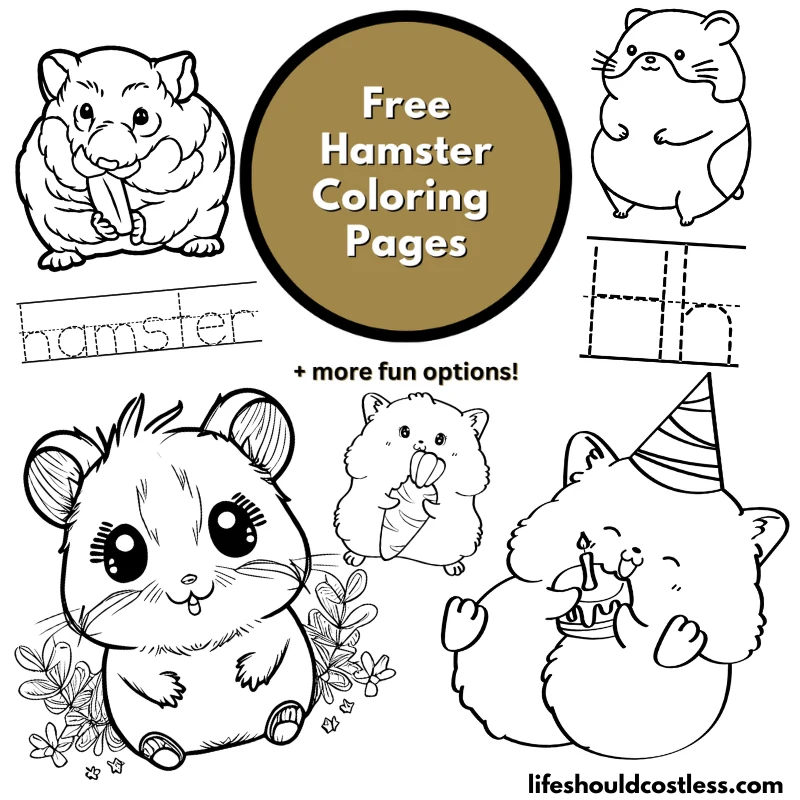
How To Follow & Support This Site
- If you would like to subscribe to my email list, go here.
- Make sure to follow along via social media, by going here.
- If you would like to learn how to really show your support to this site (at no cost to you), go here.
- If you would like to make a direct donation to the site, go here.
Check out my other free printables
- To see all of my free printables, go here.
- If you would like to see an alphabetized index of free printable coloring pages, go here!
- All of my animals coloring pages are found here.
- Or, my other mammals coloring pages can be found here.
Otherwise, here are direct links to several of my other related posts that you’re also going to love:
Animals / Mammals
Animals / Birds
Animals / Insects
Other good resources for a printable hamster
- https://wonder-day.com/en/hamster-coloring-pages/
- https://pngtree.com/freepng/couple-of-cute-hamsters-coloring-pages-outline-sketch-drawing-vector_9176091.html
- https://clipart-library.com/hamsters-coloring-pages.html
*This post was originally shared to this blog on 10/03/2023, and has since been updated to improve user experience, add video instruction, as well as to make it as shareable as possible across the social medias.
**Please note that I do try my hardest to provide factual, but easy to understand, information about each topic. If you notice a discrepancy in my coloring pages, facts, or see something that you deem “misinformation/incorrect” please make sure to notify me about it. I would prefer that you send me an email with a link to a more reputable resource on that subject, so that I can correct it as soon as possible. Thanks so much for helping this site become the best that it can be!
***Resources from djinkers were used in the production of this article.
***Resources from djinkers were used in the production of this article.
